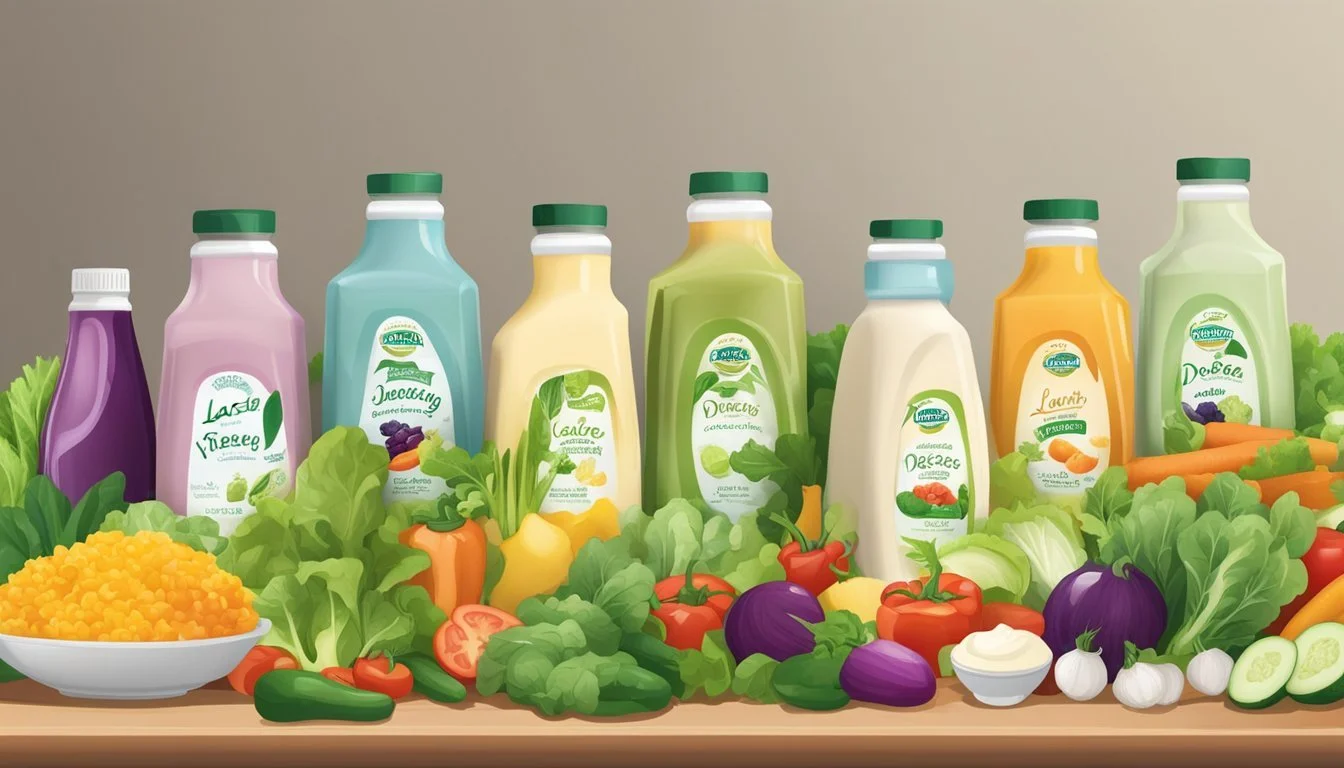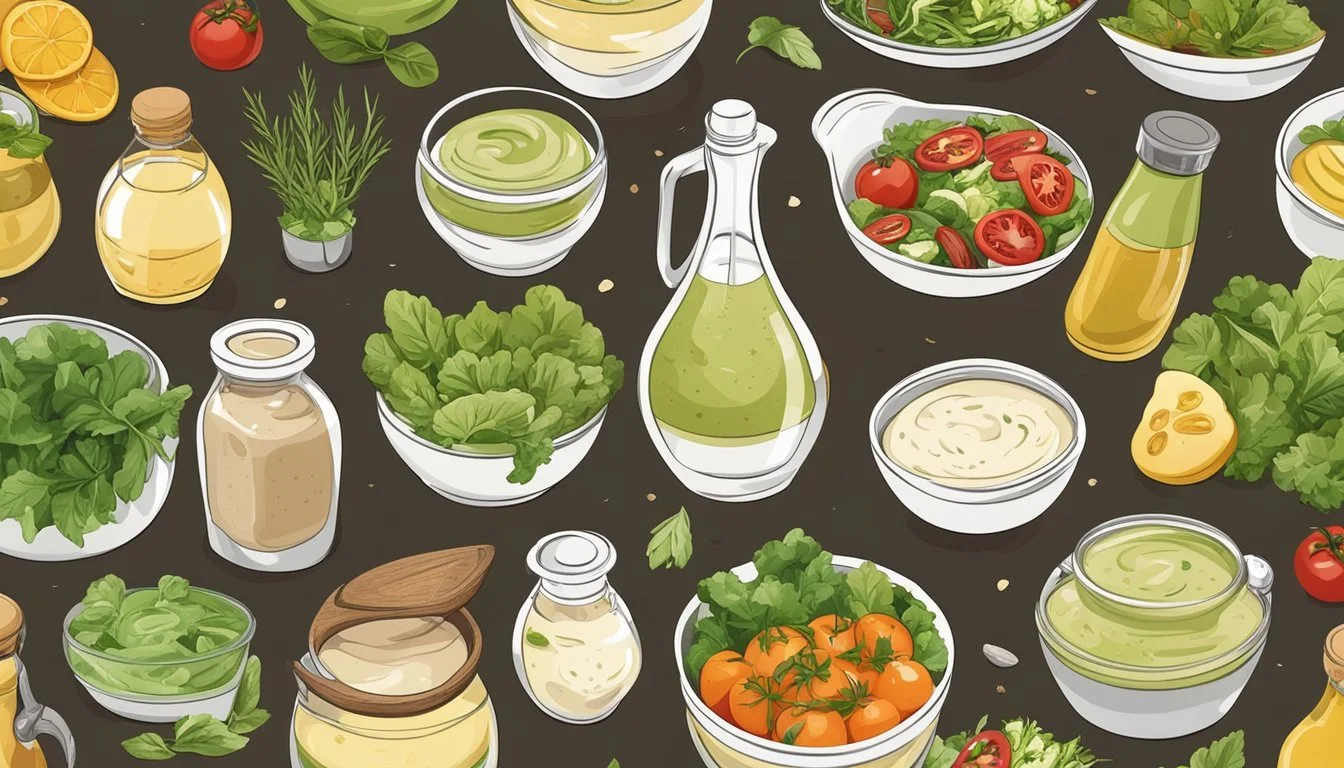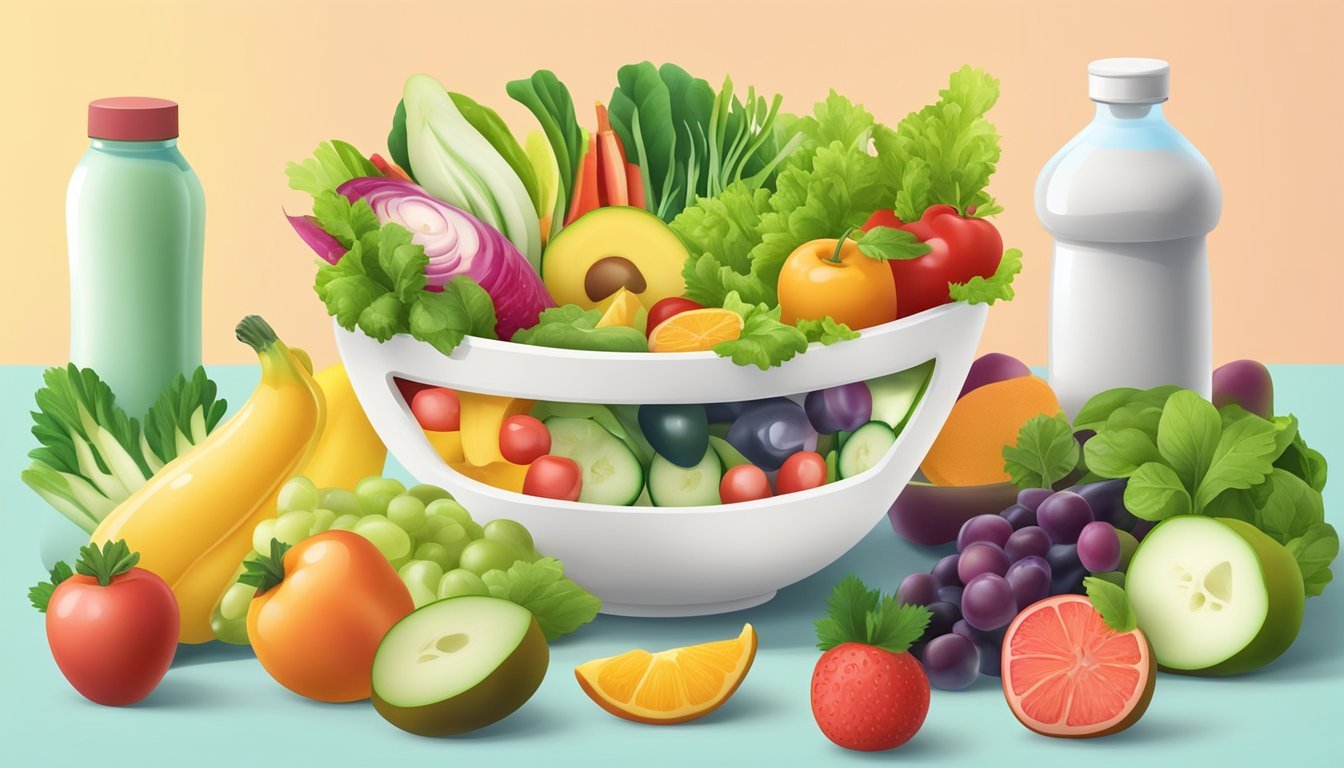What are Some Lactose-Free Salad Dressing Options?
Exploring Dairy-Free Alternatives
For those seeking lactose-free options, the world of salad dressings offers a plethora of choices to complement a fresh, leafy green salad. Salad enthusiasts can savor their meals without the discomfort that lactose might bring, as many brands have recognized the demand for dairy-free dressings. These options not only cater to those who are lactose intolerant or allergic to dairy proteins but are also suitable for vegans and those pursuing a plant-based diet.
Salad dressings traditionally derive their creaminess from ingredients like cheese, buttermilk, or creamy mayo, all of which contain lactose. However, lactose-free dressings have found alternative sources to replicate that desired richness. Ingredients such as tahini, avocado, and various oils can emulate the texture and flavor without any dairy content. Meanwhile, vinaigrettes have long been a safe haven for the lactose-averse, with simple concoctions of oil, vinegar, and herbs effortlessly fitting the dairy-free criteria.
Recent market offerings have expanded to include a diverse array of flavors in the lactose-free category, ranging from zesty Italian to tangy Thousand Island, and even classics like Caesar and ranch. Health-conscious consumers also have options of reduced-fat dressings, satisfying both dietary limitations and preferences for a lighter fare. It is now easier than ever to find a lactose-free salad dressing that doesn't compromise on taste or variety.
Understanding Lactose Intolerance
Lactose intolerance occurs when individuals lack enough lactase, the enzyme required to digest lactose—the sugar found in milk and dairy products. Symptoms can include bloating, gas, diarrhea, and abdominal pain, typically occurring after consuming dairy. They should opt for lactose-free alternatives to prevent discomfort.
Lactose-Free Options: These products contain the milk sugar, lactose, but have been treated to break it down, making them easier to digest for those with lactase deficiency.
Dairy-Free Options: These do not contain any milk products whatsoever and are suitable for individuals with lactose intolerance as well as those with milk protein allergies or those following a vegan diet.
The lactose intolerance incidence varies globally, with some ethnicities showing higher prevalence. It is important to read labels when shopping for lactose-free products, as some may still contain milk-derived ingredients that could trigger symptoms.
To ensure a diet remains well-balanced, individuals seeking lactose-free or dairy-free salad dressing alternatives should look for options that are not only free from lactose but also provide nutritional value, such as those with healthy fats and low added sugars.
Benefits of Lactose-Free Salad Dressings
Lactose-free salad dressings offer specific health benefits, particularly for those with lactose intolerance or a preference for plant-based diets, while still providing the flavorsome finish desired on salads. They can be better tailored to various dietary needs, from reduced calorie content to improved digestion.
Nutritional Advantages
Lactose-free dressings are often lower in calories and fat compared to their dairy-containing counterparts. They can contribute to a more balanced diet, as they are frequently made with a base of lighter ingredients, such as:
Vinegars (apple cider, balsamic, red wine)
Citrus juices (lemon, lime)
Plant-based oils (avocado, olive, canola)
These ingredients not only impart flavor and acidity but also contain negligible amounts of dairy-derived fats. Additionally, certain lactose-free varieties may be enhanced with protein-packed seeds or nuts, adding nutritional value. In terms of carbohydrates, they are generally low, but it's critical to read labels as some may have added sugars.
Digestive Health
For individuals with lactose intolerance, dairy-free dressings are a digestive boon. Lactose intolerance stems from the body's inability to properly break down lactose, leading to uncomfortable symptoms. Lactose-free products eliminate this concern, allowing individuals to enjoy salads without the risk of digestive distress.
Moreover, they often incorporate ingredients with natural digestive aids such as fiber, which promotes gut health and regularity. This makes them an excellent choice for not only those with lactose intolerance but for anyone looking at supporting their digestive system.
Common Ingredients in Lactose-Free Dressings
Lactose-free dressings rely heavily on alternatives to dairy that deliver flavor and texture. They are crafted with specific ingredients designed to replicate the creamy or tangy characteristics of traditional dressings, utilizing a variety of oils, acids, and plant-based ingredients.
Base Oils and Acids
In lactose-free salad dressings, the base typically consists of oils and acids that provide a fat component and tanginess, respectively. Key oils include:
Olive oil: A popular choice for its heart-healthy fats and rich flavor.
Avocado oil: Valued for its creamy texture and nutritional profile.
For the acidic component, lactose-free dressings often feature:
Lemon juice: Offers a fresh, citrusy zing.
Apple cider vinegar: Brings a tart and slightly fruity undertone.
Herbs and Spices
Herbs and spices are essential for adding depth and complexity to lactose-free dressings. Commonly used herbs include:
Parsley: Bright and slightly peppery.
Chives: Delivers a mild onion-like flavor.
Dill: Imparts a fresh, slightly anise-like taste.
These ingredients can be used fresh or dried, depending on the desired intensity of flavor.
Alternative Cream Bases
To achieve a creamy texture without dairy, lactose-free dressings may incorporate:
Almond milk: Provides a nutty flavor and smooth consistency.
Coconut milk: Adds richness and a hint of sweetness.
Tahini: Sesame-based, lending a unique, savory taste that thickens dressings.
Along with these bases, garlic is often included for its punchy, savory quality. These alternatives allow for a wide range of dairy-free dressing options that cater to various dietary needs and preferences.
DIY Lactose-Free Dressing Recipes
Creating lactose-free salad dressings at home is a straightforward process, allowing individuals with lactose intolerance or dairy aversions to enjoy a variety of flavors that complement any salad. From tangy vinaigrettes to rich and creamy options, as well as dressings with international flair, there's a multitude of possibilities to explore.
Vinaigrettes
Classic Vinaigrette
3 parts olive oil
1 part vinegar (balsamic, red wine, or apple cider)
Salt and pepper to taste
Mediterranean Vinaigrette
3 parts olive oil
1 part lemon juice
1 tsp Dijon mustard
1 minced garlic clove
Herbs such as oregano and basil
Salt and pepper
Typically, vinaigrettes are inherently lactose-free, making them a safe choice. The key to a flavorful vinaigrette is balancing acidity with the richness of the oil. For an inviting Mediterranean twist, one can incorporate lemon juice, garlic, and herbs.
Creamy Dressings
Lactose-Free Ranch
1 cup lactose-free mayonnaise
1/4 cup lactose-free milk or plant-based alternative
2 Tbsp lactose-free sour cream (optional)
Dried herbs like dill, parsley, and chives
Garlic powder, onion powder, salt, and pepper to taste
1/2 cup raw cashews, soaked and drained
1/4 cup water
2 Tbsp lemon juice
1 Tbsp olive oil
1 tsp Dijon mustard
1 minced garlic clove
Nutritional yeast for a cheesy flavor
Salt and anchovy paste (optional, and only if you're not vegetarian)
Creamy dressings do not have to contain lactose to achieve their rich texture. One can use lactose-free dairy products or plant-based ingredients like soaked cashews to replicate the creaminess found in traditional ranch or Caesar dressings.
Ethnic-Inspired Options
Asian-Vinaigrette
2 Tbsp soy sauce
1 Tbsp sesame oil
1 Tbsp rice vinegar
1 tsp honey or maple syrup
1 minced garlic clove
1 tsp grated ginger
1/2 cup tahini
1/2 cup water
2 Tbsp lemon juice
1 minced garlic clove
1 tsp ground cumin
Salt to taste
Ethnic-inspired dressings add a world of flavors to salads. An Asian-style vinaigrette makes use of traditional ingredients like soy sauce and sesame oil for a tangy kick, while a Mediterranean-inspired lemon-tahini dressing delivers a creamy texture and rich flavor without any dairy.
Store-Bought Lactose-Free Dressing Brands
For individuals with lactose intolerance or those following a dairy-free diet, various brands offer a range of salad dressings free from lactose. These include options that are both vegan-friendly and organically produced, ensuring no dairy is used in their creation.
Vegan-Friendly Brands
Several brands specialize in creating vegan dressings, which by default are lactose-free. Below are some notable brands:
Follow Your Heart: Renowned for their Vegenaise product, they also offer a variety of vegan salad dressings.
Annie's: Known for producing plant-based versions of classic dressings, such as Shiitake Sesame Vinaigrette and Lite Goddess Dressing. A few of their offerings are:
Shiitake Sesame Vinaigrette
Lite Goddess Dressing
The mentioned dressings avoid dairy and typically other allergens like eggs, offering a safe choice for those with intolerances.
Organic Dressing Options
Dressings that not only forego lactose but also prioritize organic ingredients are offered by:
Bolthouse Farms
Litehouse Foods
Organicville
These companies produce a line of organic dressings such as:
Bolthouse Farms Organic Signature Blue Cheese (Note: While this brand usually offers dairy-filled options, they might also have dairy-free alternatives or ones that use lactase enzyme to make them lactose-free)
Litehouse Foods Organic Caesar
Organicville Non-Dairy Caesar
Consumers seeking dairy-free dressings can enjoy the natural flavors and quality ingredients these organic options have to offer.
Reading Labels for Hidden Lactose
When shopping for salad dressings, one must be vigilant for hidden lactose, which can lurk under various names on ingredient labels. It is crucial to identify dairy derivatives and understand food allergen statements to ensure the selection is truly lactose-free.
Identifying Dairy Derivatives
To ascertain a salad dressing is lactose-free, one should check for common dairy ingredients and derivatives that contain lactose. Below is a list of such ingredients to avoid:
Milk, in all forms (powdered, liquid, condensed)
Whey, a by-product of cheese production
Curds, which are milk solids
Casein and caseinates, milk proteins
Lactose, the sugar found in milk
One might also encounter ingredients like lactalbumin and lactoglobulin, which should raise red flags as potential sources of lactose.
Some lactose-free options may contain lactase, the enzyme that breaks down lactose, making the product safe for those with lactose intolerance. Even if a product is labeled as non-dairy, it can still contain lactose, so it's important to read the fine print.
Understanding Food Allergen Statements
Food allergen statements are another critical area to examine. Manufacturers are required to list whether a product contains any major allergens, including milk, which is a key concern when avoiding lactose. However, be aware that terms like gluten-free, nut-free, and soy-free do not guarantee a dressing is lactose-free, as these are addressing different allergens or sensitivities.
Dressing labels might say "Contains Milk" or "May contain traces of Milk", indicating a presence or risk of milk and therefore lactose. The absence of such a statement doesn't necessarily mean the product is safe; thorough inspection of the ingredient list is still necessary. Additionally, formulations can change, so consistent label checking is advised, even for previously safe products.
Incorporating Lactose-Free Dressings into Meals
Lactose-free dressings provide a versatile way to enhance the flavor of various dishes beyond the salad bowl, enabling those with lactose intolerance or a preference for vegan options to enjoy a burst of flavor without discomfort.
Salad Ideas
Lactose-free dressings can transform a simple mix of greens into a delightful salad. They are particularly compatible with:
Green Salads: A lemon vinaigrette pairs well with a classic blend of mixed greens.
Pasta Salad: Toss pasta salad with a dairy-free Caesar dressing for a rich, tangy flavor.
Grain Salads: Drizzle a mustard-based lactose-free dressing over a quinoa or farro salad for added zest.
Salad Type Dressing Recommendation Green Salad Lemon Vinaigrette Pasta Salad Dairy-Free Caesar Grain Salad Mustard-Based Vinaigrette
Alternative Uses
Lactose-free dressings serve numerous culinary purposes beyond salads. They can be employed creatively as:
Marinades: Infuse flavor into proteins such as chicken or tofu by marinating with a zesty Italian or Greek dressing.
Sandwich Spreads: Replace mayonnaise with a tangy lactose-free ranch dressing on sandwiches and wraps.
Dips: Enhance the taste of raw vegetables, fries, or chips by using dressings like a dairy-free ranch as a dipping sauce.
Roasted Vegetables: Boost the savory nature of roasted vegetables by tossing them with a balsamic vinaigrette before or after roasting.
Each table entry below suggests an inventive use of lactose-free dressing:
Kitchen Use Dressing Application Marinade Italian/Greek Dressing Sandwich Spread Lactose-Free Ranch Dressing Dip Any Dairy-Free Creamy Dressing Roasted Veggies Balsamic Vinaigrette
Integrating these dressings into entrees and sides offers additional dimensions of flavor sans lactose, ensuring that every dish can be both mouthwatering and inclusive.
Nutritional Considerations
When choosing a lactose-free salad dressing, it's important to consider the nutritional profile, including calorie and fat content, as well as the presence of vitamins and minerals that can benefit overall health.
Calorie and Fat Content
Lactose-free salad dressings vary widely in terms of calories and fat. They often substitute dairy with ingredients like oils, which can be high in calories and fat. For those monitoring their calorie intake, this can be a crucial factor.
Saturated Fat: Some may contain significant amounts of saturated fat, especially if made with coconut oil or cream. It's important to read the label to manage intake of saturated fats, which should be limited according to health guidelines.
Calorie Count: Generally, vinaigrette-style dressings will have fewer calories compared to creamy dressings, such as those that are mayonnaise or tahini-based.
Vitamins and Minerals
Lactose-free dressings can be good sources of certain vitamins and minerals. However, they may lack in calcium, which is commonly found in dairy products.
Calcium: Some dressings may fortify with calcium to help meet the dietary needs, particularly for individuals who avoid dairy.
Sodium: Lactose-free dressings often contain added sodium for flavor, making it essential to check the labels to ensure consumption is within recommended levels.
Vitamin Content: Ingredients like lemon juice or vinegar provide Vitamin C, while added herbs can offer a range of micronutrients.
Adapting to Special Diets
When accommodating for specific dietary needs, it’s important to provide options that cater to the ketogenic, paleo, and Whole30 eating plans. Each of these diets emphasizes particular food groups and omits others, which makes the right dressing choice critical to adhering to these regimens.
Ketogenic Options
The ketogenic diet prioritizes high-fat, low-carbohydrate foods. Salad dressings suitable for a ketogenic diet often focus on healthy fats such as oils while avoiding added sugars. A simple yet flavorful ketogenic-friendly dressing might include:
Ingredients: Mayonnaise/Base, Apple Cider Vinegar, Dijon Mustard, Salt, Pepper, Herbs
Store-Bought Choices: Ranch, Caesar, and other mayonnaise or oil-based dressings without added sugar
Individuals following a keto diet can opt for dairy-free versions of mayonnaise or opt for those made with avocado oil to enhance nutritional value.
Paleo Varieties
Paleo-friendly dressings adhere to the principles of whole, unprocessed foods without grains, dairy, or artificial additives. Paleo dressings focus on:
Base Oils: Extra Virgin Olive Oil, Avocado Oil
Flavorings: Lemon Juice, Garlic, Herbs, Sea Salt
Examples: Vinaigrettes, Citrus-Based Dressings
Commercially available paleo salad dressings avoid soy, gluten, and dairy, ensuring they fit within the diet's guidelines.
Whole30-Approved
For those on the Whole30 diet, dressings must be free from sugar, alcohol, grains, legumes, soy, and dairy. Whole30-compliant salad dressings often include:
Foundational Ingredients: Extra Virgin Olive Oil, Vinegar (not malt-based), Citrus Juices, Spices
Typical Dressings: Italian, Balsamic, Oil and Vinegar Blends
The Whole30 program encourages reading labels to ensure dressings align with its strict elimination protocol, supporting digestive health and food sensitivities.
Lifestyle and Environmental Benefits
Choosing lactose-free salad dressings aligns with a growing awareness of the benefits these options offer, both personally and for the environment. They cater to broader dietary preferences and have a reduced ecological footprint compared to traditional dressings containing dairy.
Supporting Veganism
Lactose-free dressings often fall within vegan standards, excluding all animal products. By opting for these dressings, consumers support a dietary choice that abstains from animal exploitation and encourages the use of plant-based ingredients. This has significant lifestyle implications for those adhering to a vegan diet, providing them with a variety of flavorful choices without compromising their values.
Organic Dressings: Many lactose-free options are also organic, reducing the exposure to pesticides and chemicals, which is a crucial aspect of vegan ethics.
Nutrient-Rich: Vegan dressings frequently incorporate whole food ingredients like nuts, seeds, and avocados, offering additional health benefits and vital nutrients.
Eco-Conscious Choices
The production of lactose-free and vegan dressings often results in a lower environmental impact. The dairy industry is a known contributor to greenhouse gas emissions, deforestation, and water pollution. Therefore, by choosing lactose-free options, consumers are making more sustainable choices.
Resource Efficiency: Plant-based ingredients generally require less water and land to produce than dairy.
Carbon Footprint: Reduced reliance on dairy means a decrease in greenhouse gas emissions associated with livestock.
By preferring lactose-free salad dressings, consumers not only accommodate dietary restrictions and ethical choices but also contribute toward a more sustainable and ecologically responsible food system.









